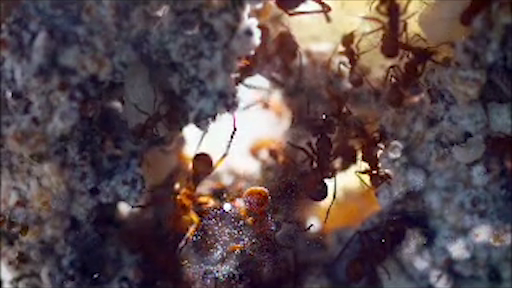7.2 Antibiotics from leafcutter ants
The close relationship between South American leafcutter ants and the fungus Leucoagaricus gonglophorus, which the ants farm for food, has also opened up potential avenues of research. Watch the video below to find out more.
Download this video clip.Video player: Video 4


Transcript: Video 4 South American leafcutter ants.
NARRATOR:
Antibiotics are under threat. But salvation may, again, lie with a team of British scientists who are working to invent a brand new antibiotic using South American ants. These ants live in underground nests. For food, they grow a fungus garden made from rotting leaves and flowers. To keep their food clean, they use an antibiotic to kill any germs.
DR. IAN BEDFORD:
Sometimes you get a contaminant. And, of course, the ants need to get rid of that or else it will just start destroying their food source.
NARRATOR:
So what is it that you've discovered about what they're doing that's so exciting?
DR. IAN BEDFORD:
What's being found is that the worker ants actually have a bacteria that they grow on their backs. And this bacteria has very, very powerful antimicrobial properties. So when the ants discover there's a contaminant in their fungus garden, they can actually smear some of this bacteria onto the unwanted bacteria and kill it off. So by isolating that bacteria that's on their backs, this has potential for controlling all sorts of problems that we now face.
NARRATOR:
For instance?
DR. IAN BEDFORD:
The bacteria can control MRSA.
NARRATOR:
So are we looking here at something that could give us the first new antibiotic in, well, the best part of 40 years?
DR. IAN BEDFORD:
Quite possibly. And it also opens up a lot of new avenues for research.
Video 4 South American leafcutter ants.
Interactive feature not available in single page view (see it in standard view).
